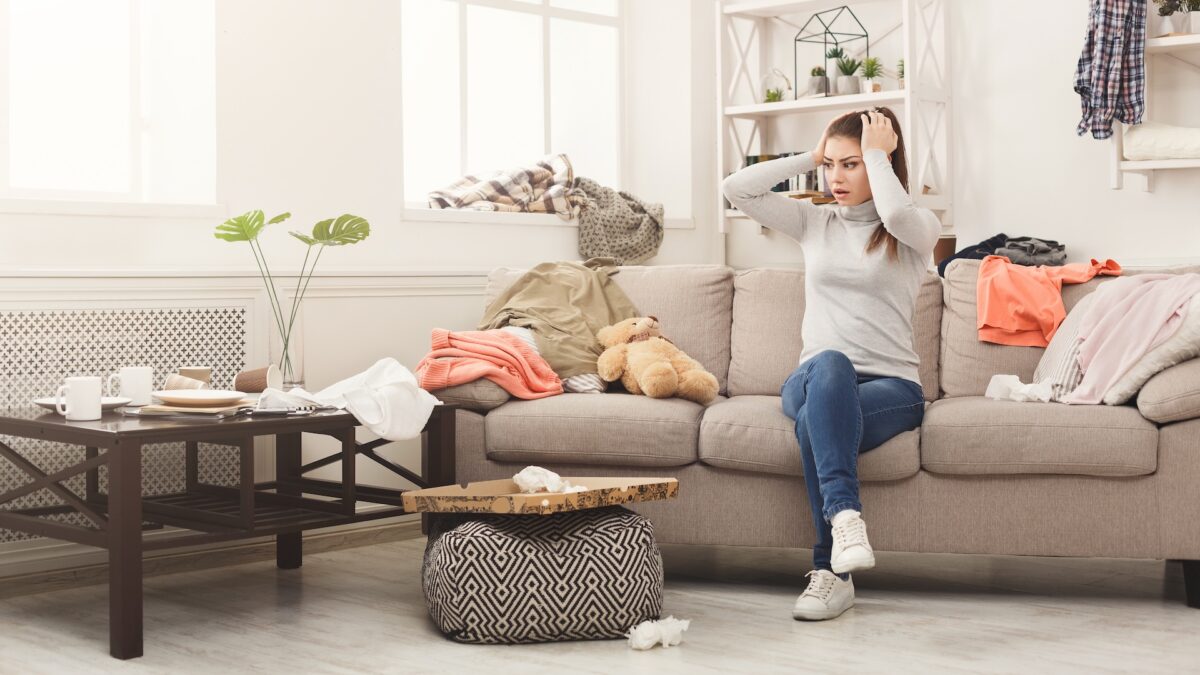From noisy at-home exercises to pets running amok, you’re bound to be a little noisy during the day. But is that grounds for your downstairs neighbor to file a complaint about you? Learn what your rights are and how to keep the peace in your living community!
Let’s start with some FAQs. All the rules and mumbo jumbo surrounding local noise ordinances can get a little confusing. And though rules and regulations vary by county and HOA, here are some general terms you should be acquainted with:
What is a HOA?
A homeowner’s association is a legal organization run by elected community members that create CC&Rs — covenants, conditions, and restrictions — to uphold order and standards, maintain property and aesthetics, and increase overall home values.
Do I have to be a part of the HOA?
When you rent or purchase a home or condo, you automatically become a member of the HOA and must abide by the CC&Rs. The rules are legally binding. The HOA can enforce its policies with warnings, fines, and if things turn drastic, legal action.
What exactly are CC&Rs?
The CC&Rs document details the ownership rights of the homeowners vs. the association and will outline all the expectations. CC&Rs typically cover lawn and home maintenance, pets, home occupancy limits, parking, trash and recycling, and what brings you to this page, noise complaint policies. In some instances, CC&Rs may also be referred to as bylaws.
Do all communities have the same rules?
No. First off, not all neighborhoods have HOAs, though many master-planned urban and suburban communities do. Additionally, rules, policies, and CC&Rs will vary from neighborhood to neighborhood and complex to complex.
Be sure to familiarize yourself with those of your community to know what you can and can’t do — and what your neighbors can and can’t complain about. It’s also a good idea to get to know your neighbors — the friendlier terms you’re on with them, the easier it will be to work out any potential issues.
What are quiet hours?
Many HOAs and apartment complexes have rules and policies concerning the level of noise allowed during certain hours of the day and night. Typically, a community will enforce “quiet hours” from about 10 pm to 8 am — with many cities having more widespread, legally-enforceable regulations, too.
However, even outside of quiet hours, be considerate of your neighbors! Try avoiding irritants like letting your dog bark for hours on end or hosting your teen’s band practice five afternoons a week. Sometimes, it’s easy to tune out sounds that you’re familiar with, but that may not be the case for your neighbors.
Can my neighbors complain?
A neighbor has the right to report a “private nuisance claim” to the HOA board. In turn, the board can dismiss or act to eliminate the nuisance. So, whether or not the neighbor’s complaint is considered valid ultimately depends on the board of directors.
Additionally, your neighbor could also report you to the local non-emergency hotline, in which case you may get a visit from the police.
Where can I find a list of rules?
These documents should be available in several places. Check with the leasing office, HOA, or complex website, the management company, or ask a HOA board member or member of the leasing staff.
How can I protect myself against noise complaints?
Be a good neighbor and sound-proof your house, apartment, or condo. Reducing the chance of neighbors complaining about noise from apartment to apartment is a win for you, too. Plus, it doesn’t have to cost an arm and a leg. Check out these inexpensive ways to sound-proof your place.
- Rugs. A large area rug does wonders to muffle noise. Use a thick rug pad underneath for extra sound absorption. You can also layer two or three rugs for a stylish and even more effective look.
- Curtains. Hang thick, floor-to-ceiling curtains on the windows. The soft fabric will help temper noise. You can even invest in soundproof curtains.
- Bookshelves. Put all those old books and magazines to good use. Build bookshelves against the shared walls. For additional insulation, pad the back of bookshelves with foam or towel — you can cover that with plywood or cardboard and adhesive wallpaper.
- Art. Use artwork to sound-proof your home, too. Canvases will naturally absorb some noise and you can increase their usefulness by padding the back (most canvases should have an indented to make a perfect pocket).
- Tapestries. Hang wall tapestries or macramé wall hangings. They will reduce the number of hard surfaces that make sound travel — and look good while doing it.
- Furniture. Let your furniture serve double duty—upholstered furniture is the most helpful, especially those cozy, plush couches and chairs (the kind you want anyway, right?).
- Sealants. Address any cracks or crevices. Plug the cracks under doors when you plan to make a bit more noise (like your piano lessons). A good option for windows is a window seal kit.
Ready to noise-proof your space? Visit CORT Furniture Outlet for budget-friendly rug and furniture options! You’ll find heavily discounted new and gently used furniture that can help you keep the noise level down in your home—and keep Downstairs Bob happy!




